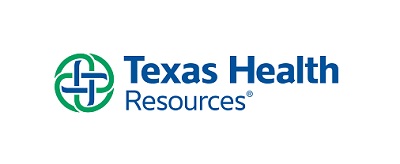The global healthcare industry has traditionally been slow in embracing new technologies and fostering innovation. While other sectors have witnessed remarkable advancements like self-driving cars, the Internet of Things, and computer vision, the healthcare field has yet to fully harness the potential of these innovations. Several key factors contribute to this delayed adoption:
- Consumer Reluctance: Many individuals still prefer in-person interactions with their healthcare providers over utilizing technology. There is a hesitancy to fully embrace technology as a means of healthcare delivery.
- Practitioner Hesitation: Skilled healthcare professionals may be hesitant to adopt new technologies due to a lack of training or familiarity with these advancements. The fast pace of technological advancements can make it challenging for practitioners to keep up and fully integrate them into their practices.
- Status Quo of Major Stakeholders: Major stakeholders in the healthcare industry often adhere to traditional practices of delivering care. This philosophical alignment with conventional methods can hinder the widespread adoption of innovative technologies.
- Regulatory Challenges: Introducing new technologies into the healthcare sector requires navigating complex legal and regulatory frameworks. Determining which services can be offered, how to bill for them, and understanding government regulations and standards can pose significant hurdles.
- Fragmented Market: The healthcare market is often fragmented, with limited integration between different care partners and providers. This lack of seamless information sharing, and coordination makes it difficult to create a holistic and efficient healthcare experience.
However, the COVID-19 pandemic has highlighted that under the right circumstances, technologies can be rapidly deployed to reshape and redesign healthcare delivery. Investing in technology has the potential to shift a significant portion of the $250 billion spent on US healthcare towards virtually enabled care, resulting in cost savings, improved outcomes, and enhanced convenience. Embracing technology enablement is crucial for long-term sustainable outcomes and reducing waste in healthcare.
Innovation in healthcare has the potential to greatly improve health outcomes, and there are several noteworthy examples of technologies driving this progress. Robotics, Immunotherapy, Augmented Reality, Virtual Reality, Advanced AI, Connected Devices, and Virtual Care are just a few examples of how innovation can revolutionize healthcare. Additionally, predictive AI/ML algorithms and models can be trained to personalize care services and treatment plans for individual consumers and patients. Here are some practical examples of how technology can be integrated into day-to-day healthcare:
1.Reducing Administrative Burden:
Automation can alleviate repetitive reporting and documentation tasks, allowing clinicians to focus more on patient care and communication. This improved patient-physician relationship not only benefits patients but also reduces provider burnout. Mobile apps and website interfaces can be utilized for tasks like appointment booking, viewing test results, and appointment check-ins. Robotic process automation (RPA) can streamline challenges related to billing, late payments, prior authorizations, and medical coding errors, improving efficiency and reducing costs. Vendors such as Cognizant, IBM, UiPath, Fortra, and Blueprism offer RPA solutions specifically designed for healthcare routine tasks and workflows.
2. Use of Virtual Care and Telemedicine:
Virtual care offers flexible and easily accessible healthcare for consumers while reducing costs by minimizing unnecessary urgent or emergency visits for providers. During the pandemic, Medicare Telehealth reported a 63-fold increase in usage. Over the next five years, there will be an increased demand for virtual behavioral health services, and virtual platforms will continue to play a significant role in healthcare technology. With insurance standards, reimbursement, faster internet connections, and smartphones as enablers, virtual care is expected to expand into virtual specialty care, longitudinal virtual care, virtual diagnostics, and Tele ICUs.
3.Use of Big Data and Analytics for Operating Efficiency:
Significant cost savings in healthcare can be achieved by reducing waste and increasing physician productivity. Analytical capabilities can identify areas of opportunity, reduce unnecessary staffing expenses, and optimize physician access. Hospitals can make informed decisions by studying existing staffing and demand needs, minimizing the need for overtime or contract labor. Artificial intelligence and predictive analytics can forecast demand and facilitate timely supply orders. For example, Radiofrequency tags can track the life cycle of high-value equipment, ensuring timely replacement.
4. Use of Technology for Targeted Marketing to Patients:
Hospitals often waste millions of dollars on marketing that fails to reach the right individuals. By leveraging data and technology, doctors can engage in micro-targeted marketing. Real-time technologies like Celebrus enable personalized experiences and effective market capture. Investments in Search Engine Optimization (SEO) and healthcare Customer Relationship Management (CRM) systems like Salesforce can yield higher volumes with less effort and better return on investment.
Technology is a powerful tool that enables seamless care delivery and cost reduction in healthcare. Its rapid evolution necessitates an adaptive approach to adopting and utilizing these innovative advances, ensuring that we are well-prepared to face any future challenges similar to those posed by the COVID-19 pandemic.






















